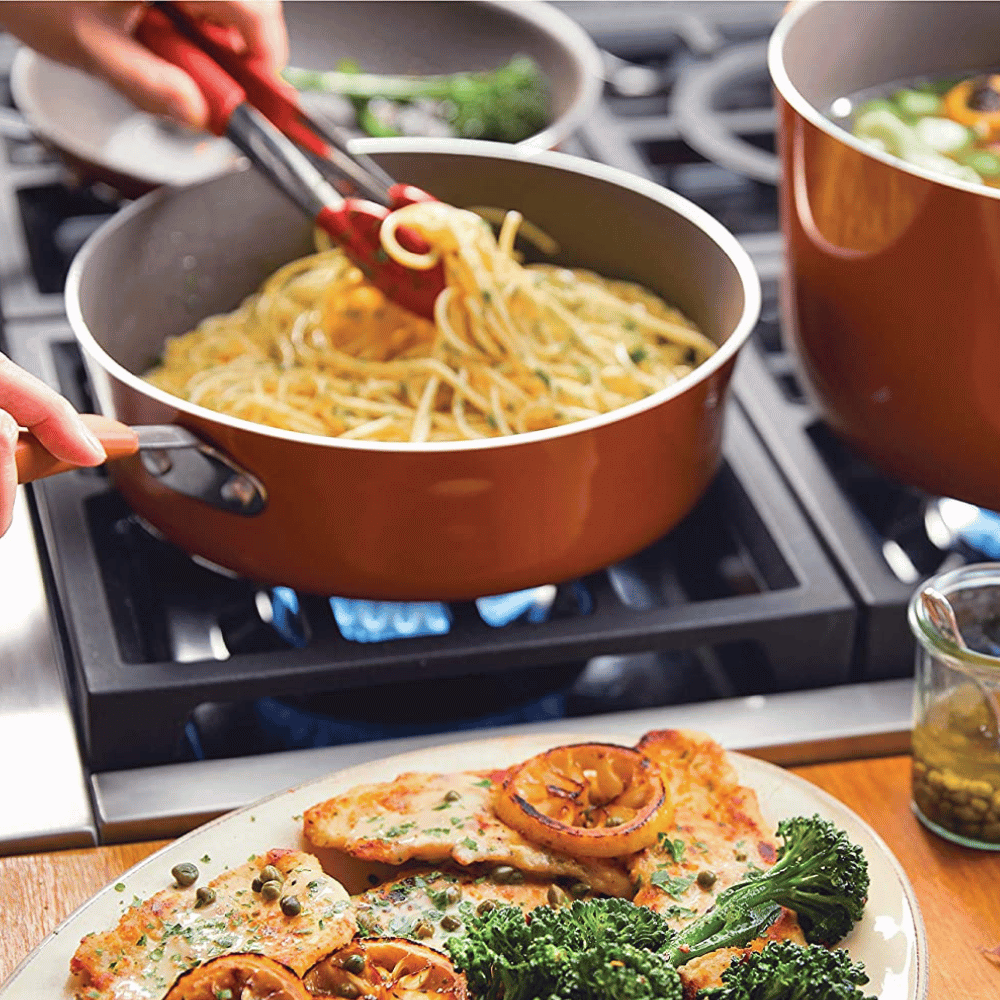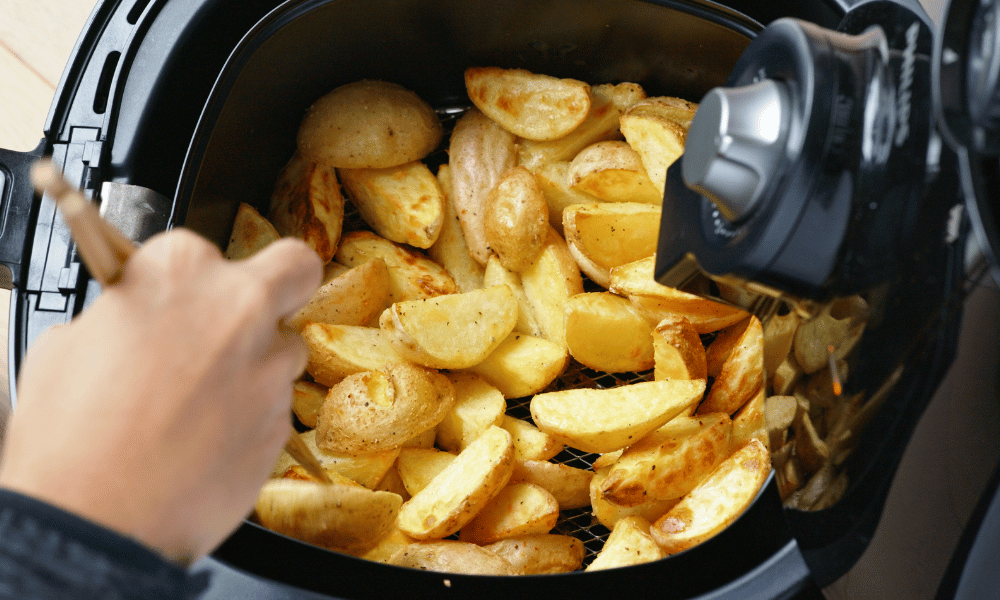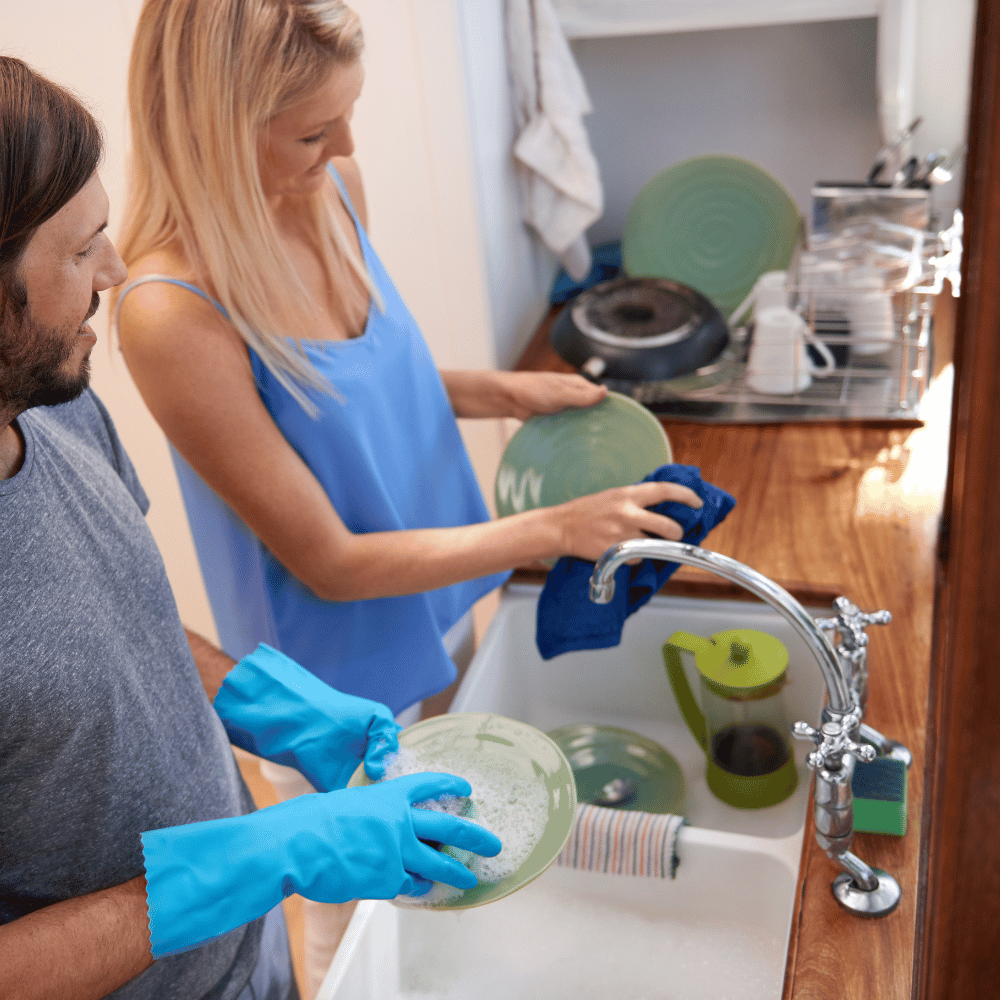Picking the right pots and pans for your gas stove is like casting actors for a blockbuster movie. You wouldn't choose a great comedian to play a tragic hero, would you? (Although, I must admit, that could be interesting...) Similarly, not every shiny, good-looking pot or pan can handle the heat of a gas stove. In this veritable Game of Scones, only the right cookware can truly rule the realms of your stovetop.
In this tantalizing tale of culinary exploration, we're diving deep into the world of cookware suited to gas stoves. We'll navigate the sea of stainless steel, conquer the mountains of cast iron, and unlock the mystery of the copper cookware. From understanding the furious flame of gas stoves to recognizing the key features of compatible cookware - we've got it all.
So, grab a cup of tea, take a seat, and get comfy. You're about to embark on an enlightening adventure through the sizzling world of gas stove cookware. Ready, set, let's get cooking!
Understanding Gas Stoves
Ready to fire up the knowledge grill? Great! Let's turn our attention to those fabulous fire-breathing dragons of the kitchen: gas stoves. What makes them tick, or should I say, flicker? And what's all the hot gossip about the kind of heat they produce? Let's get down to the sizzling details.
Gas stoves, my dear epicurean explorers, work by releasing gas from a pipeline or tank, which then gets ignited by our best pal, Mr. Spark. Think of it like the dragon's breath - the gas is the fuel, the spark is the fire, and together, they turn your ordinary kitchen into a flame-roasted flavor factory.
But gas stoves don't just bring the heat; they bring a special kind of heat. It's called 'direct heat'. Like the hottest gossip in town, this direct heat travels fast, reaches wide, and leaves no pot or pan untouched. It heats your cookware evenly, ensuring your pan gets hot quicker, making your onions weep with joy (or is that just the slicing?).
So, what's the skinny on gas stoves? Well, they're like that spontaneous friend who's always ready for an adventure. Turn on the heat, and BOOM, instant heat! You get precision control, too, like a maestro conducting a symphony of sizzling steaks and simmering sauces. But remember, with great power comes great responsibility! Gas stoves need proper ventilation, and you've got to watch out for those flare-ups (and not just the ones in your vintage wardrobe!).
In the next chapter of our culinary chronicles, we'll get the 'dish' on the essential features of cookware that can handle the temperamental temperament of gas stoves. Keep those apron strings tied tight, we're just getting warmed up!
Essential Features of Cookware for a Gas Stove
Alright, let's dive into the juicy stuff. You see, not all cookware is created equal, just like not all pizzas come with extra cheese (a travesty, I know!). Certain features make some pots and pans as perfectly suited for a gas stove as butter is for popcorn. Here's the scoop.
First off, let's talk material. If cookware were a boy band, material would be the lead singer. Stainless steel is the classic crooner with his timeless looks and tough-as-nails attitude. Then we've got the rockstar cast iron, hot-headed but oh-so-reliable. Copper's the charming one, stealing the spotlight with his rapid-fire heat conduction. Each member has its own role, so consider the kind of cuisine concert you want to conduct before picking your band.
Thickness enters the chat. Now, we all love our wafer-thin pancakes and flaky pastries, but when it comes to cookware, we like 'em thick. A thicker pot or pan holds and distributes heat more evenly. It's like getting a warm hug, but from your cookware. Who wouldn't want that?
Finally, the maestro of the kitchen orchestra - heat conduction. You've met the players, now meet the conductor. Good heat conduction ensures that your cookware heats up quickly and evenly. It's the magical force that turns your perfectly chopped veggies into a sizzling stir-fry. Like a top-notch gossip, heat conduction doesn't leave any spot untold, making sure every corner of your cookware gets in on the heat action.
So there you have it, the three musketeers of prime gas stove cookware - material, thickness, and heat conduction. Together, they form the dream team that can turn your gas stove from flame-throwing dragon to culinary whiz. In our next chapter, we're diving deeper into the world of cookware materials. Stay tuned, it's going to be a hoot!
Types of Cookware Materials
Ready to rock out with your pots out? Good! Because it's time to dive into the glitzy world of cookware materials. Think of it as Hollywood, but for your kitchen. Let's roll out the red carpet and meet our A-listers.
First up, we have the cool and collected Stainless Steel. With his shiny good looks and excellent heat resistance, he's the reliable action hero of cookware materials. Ever ready for the high heat of a gas stove, Stainless Steel makes sure your food gets cooked evenly and thoroughly, all while maintaining that pristine, camera-ready finish. But watch out for his dramatic side, he can sometimes leave food sticking to the surface if the heat gets too high.
Next in line is the heavyweight champion, Cast Iron. If cookware materials were wrestlers, Cast Iron would be the world champion. He takes a while to heat up, but once he's in the ring, he distributes heat like a pro and stays hot for a long time. Perfect for searing steaks to perfection or simmering a hearty stew, Cast Iron is your go-to guy for gas stoves. Just remember, he requires a little extra TLC with seasoning and cleaning, like any true diva.
Finally, we have the charismatic Copper. Fast and furious, Copper heats up quicker than you can say 'dinner's ready' and cools down just as fast. This gives you incredible control over your cooking temperature, ideal for delicate tasks like melting chocolate or whipping up a finicky hollandaise sauce. However, keep in mind that Copper can be a bit high maintenance and requires regular polishing to keep up his glowing good looks.
So, there you have it. Stainless Steel, Cast Iron, and Copper: your golden trio of cookware materials for gas stoves. Each has their own strengths and quirks, so it's about finding the one that matches your cooking style (and your kitchen decor, of course).
How We Choose the Best Cookware for Gas Stoves
You see, choosing the best cookware for gas stoves is like picking the top contenders in a reality cooking show. We look for talent (heat conduction), charisma (aesthetics), and endurance (durability). We also factor in their secret ingredient (unique features) and how they handle the pressure (of high-heat cooking, that is). We scrutinize their performance and yes, we admit, we're tough judges.
Just like a culinary talent scout, we delve deep into user reviews, getting the skinny from real people cooking real meals. We cross-check with experts, you know, those cool cats who really know their pans from their pots.
And finally, we consider value for money because, let's face it, not everyone's got a pot of gold. So there you have it, a peek behind the curtain on how we crown the king of cookware for gas stoves. It's a tough job, but someone's got to eat...I mean, do it!
T-Fal Ultimate
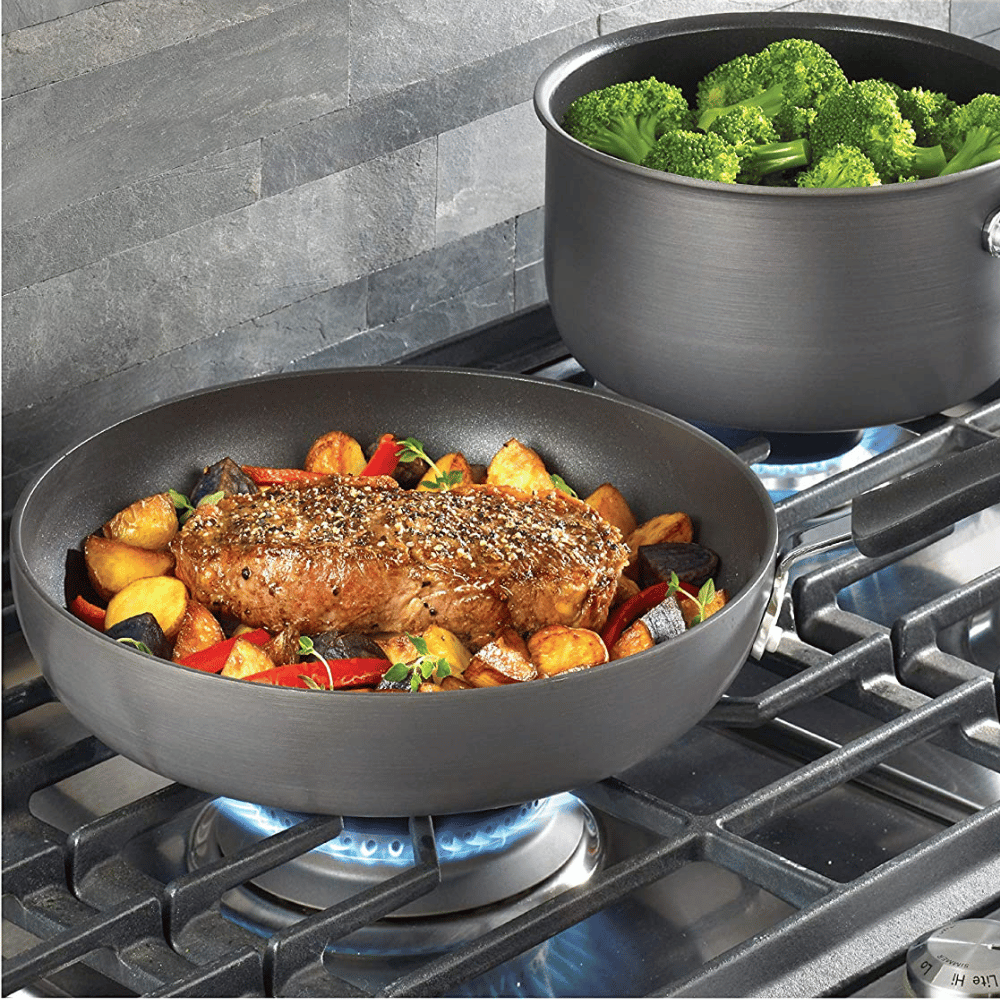
T-fal Ultimate Hard Anodized Nonstick Cookware Set 17 Piece Pots and Pans, Dishwasher Safe Black
Why We Love It
Oh, T-fal Ultimate Hard Anodized Nonstick Cookware Set, let us count the ways we love thee! You're like the superhero team of cookware - each piece with its unique power, ready to make our culinary dreams come true. With your hard titanium nonstick interior, you laugh in the face of scratches, keep toxins at bay, and let our food slide around like an ice skater in the Olympics.
But that's not all! Your Thermo Spot Indicator is like a traffic light for our cooking, telling us when you're ready to rock 'n roll. And those riveted handles? They're like a firm handshake - solid, comfortable, and oh-so reassuring. And don't get us started on your vented lids... maintaining visibility while trapping enough heat and moisture for perfect results every time? It's like having x-ray vision for cooking!
And can we talk about the set? It's like the greatest hits album of cookware! From frying pans of all sizes to Dutch ovens, saucepans, and a griddle... you've got us covered for every meal.
Pros:
- Durable nonstick: Think titanium body armor, but for your cookware.
- Thermo Spot Indicator: Your personal culinary traffic light.
- Riveted Handles & Vented Lids: Like a firm handshake with x-ray vision.
- Versatility: Ready for all stovetops (except induction) and oven-friendly up to 400 degrees Fahrenheit.
- Inclusion of a '1 egg wonder fry pan': Because everyone needs a little wonder in their lives.
Cons:
- Not compatible with induction cooktops: Alas, no superhero is invincible.
- Oven safe only up to 400 degrees Fahrenheit: Keep an eye on that temperature dial!
- '1 egg wonder fry pan' size may not be suitable for an ostrich egg brunch: A minor hiccup, we agree.
Ninja Foodi NeverStick
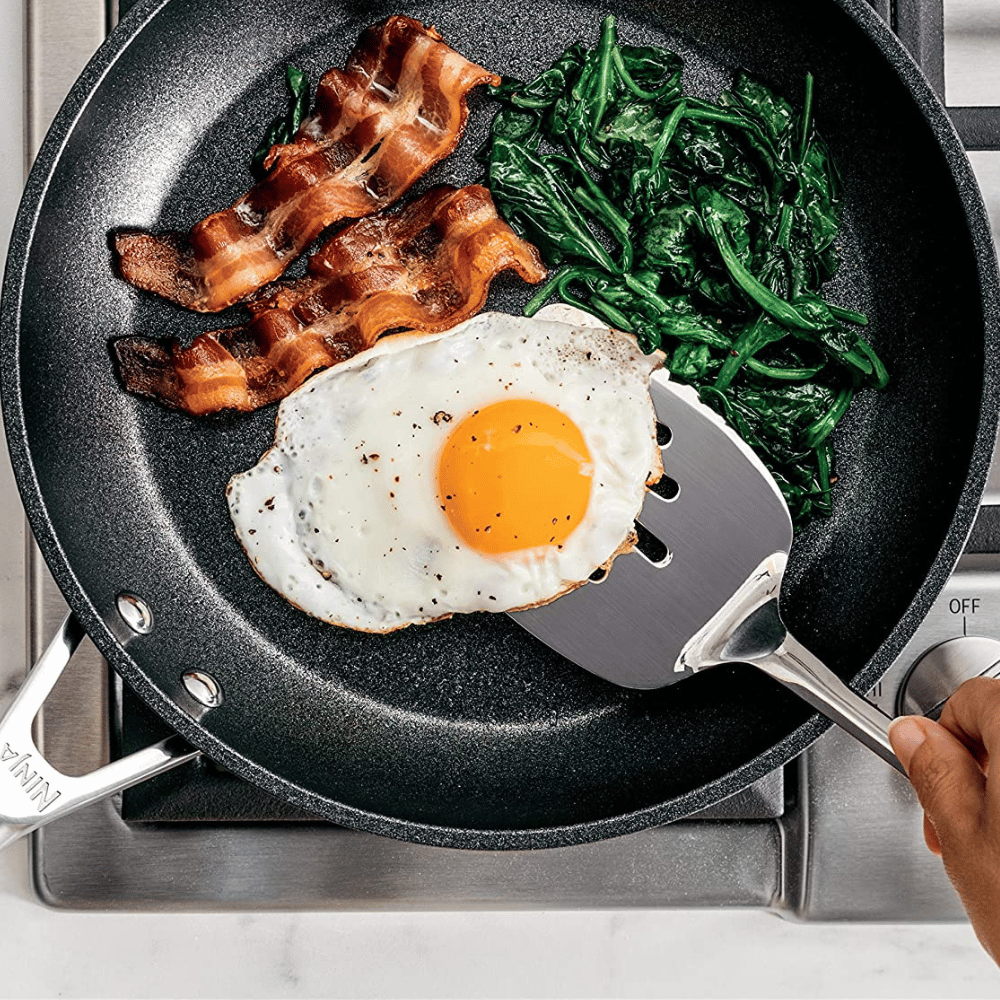
Ninja C39900 Foodi NeverStick Premium 16-Piece Cookware Set, Hard-Anodized, Nonstick, Durable & Oven Safe to 500°F, Slate Grey
Why We Love It
Step aside, ninjas of the martial arts world. There's a new ninja in town and it's slaying in the kitchen, not the dojo! The Ninja C39900 Foodi NeverStick Premium Cookware Set comes with a whopping 16 pieces, ready to tackle your culinary battles. This set isn't just NeverStick, it's NeverQuit!
Your pans have been super-heated at 30,000°F? Well, that's hotter than a jalapeno eating a ghost pepper! We love the fact that these pans have been through the fire and emerged victorious, promising never to stick, chip, or flake. Talk about resilience!
The hard-anodized exterior is like a knight in shining armor, standing up to scratches just like stainless steel. And did we hear you say oven safe up to 500°F? Now we're cooking! Transferring from stovetop to oven is a breeze, just like flipping a pancake.
Oh, and let's not forget about the stainless-steel handles, ergonomically designed for comfort and strength. And the glass lids with their chunky stainless-steel rims? It's like having a porthole into the delicious depths of our culinary creations.
Pros:
- NeverStick, NeverChip, NeverFlake: That's a lot of nevers we can get behind!
- Hard-Anodized Exterior: Built to last, like your favorite rock anthem.
- Oven Safe: Because every good stovetop party needs an oven after-party.
- Ergonomic Handles & Glass Lids: Comfort in your hand and a clear view of your culinary masterpiece.
Cons:
- Not actually a ninja: We know, we were disappointed too.
- If you have a small kitchen, storing all 16 pieces could be like playing Tetris.
- With this many pieces in the set, you might run out of recipes before you run out of pans!
Rachel Ray Cucina
Why We Love It
"Look out, world! We're spicing things up in the kitchen and it's not with extra chili flakes. It's the Rachael Ray Cucina Nonstick Cookware Pots and Pans Set in Pumpkin Orange! This set is as dependable as your grandma's secret recipes and as vibrant as a fall harvest festival.
Let's talk about that durable aluminum and sturdy hard enamel porcelain exterior. It's like the kitchen version of a superhero: tough, resilient, and always ready for action. And that espresso-colored nonstick interior? It's smoother than a jazz saxophone solo, letting our food slide right off and making cleanup a breeze.
The dual-riveted rubberized stainless steel handles are like a firm, friendly handshake - they promise good times and they deliver. Plus, those shatter-resistant glass lids? You can drop the beat (or the lid) and keep on cooking!
And can we take a moment to appreciate the rustic pumpkin orange color? It's like having a little piece of autumn in your kitchen all year round!"
Pros:
- Durable and Nonstick: Like the superhero of the kitchen, without the cape.
- Convenient Handles & Glass Lids: Your cooking journey, now with less drama and more control.
- Oven Safe: It can handle the heat, can you?
- Rustic Pumpkin Orange: A dash of autumn, a pinch of modern design.
Cons:
- Not Compatible with Induction Stovetops: Sadly, this superhero has a weakness.
- Pumpkin Orange might clash with your summer-themed kitchen décor: But hey, who doesn't love a pop of color?
- Doesn't come with Rachael Ray's cooking skills: You'll have to whip those up yourself!
GreenLife Diamond
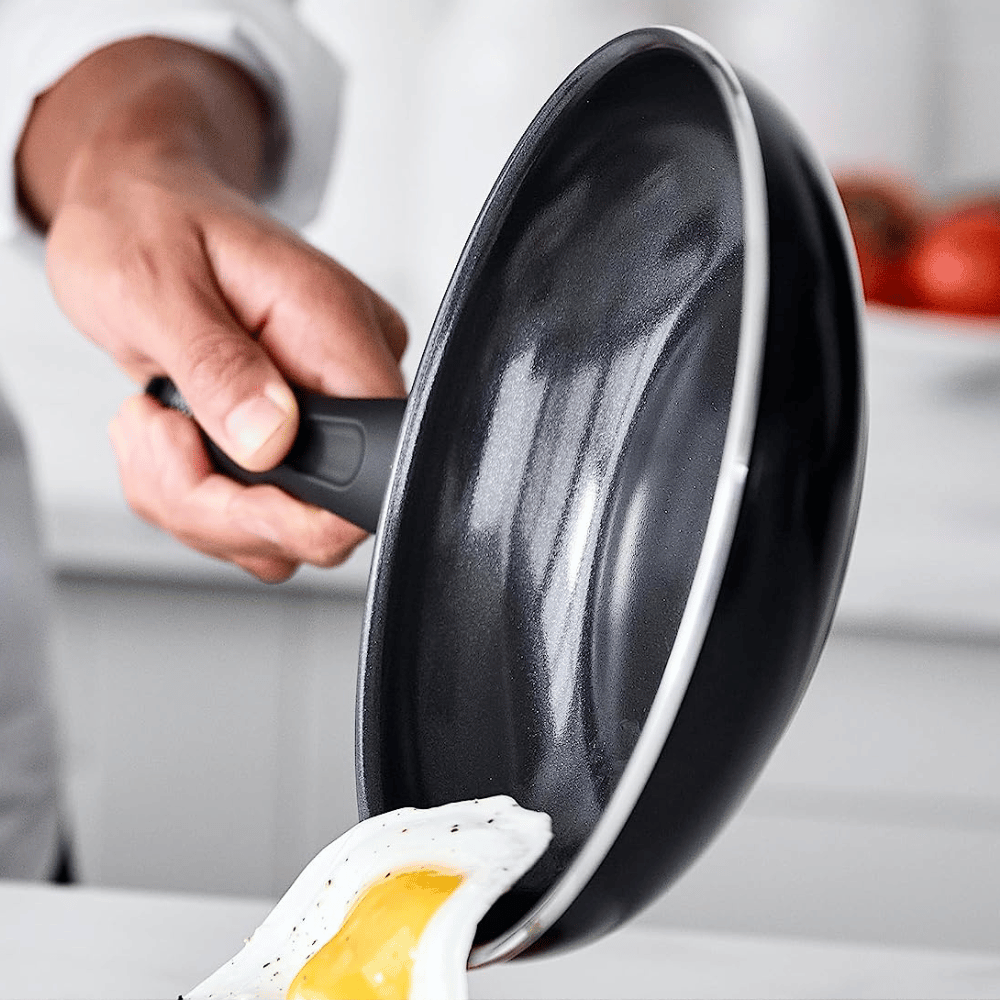
GreenLife Soft Grip Diamond Healthy Ceramic Nonstick 16 Piece Kitchen Cookware Pots and Frying Sauce Pans Set, PFAS-Free, Dishwasher Safe
Why We Love It
"Ever dreamed of cooking with diamonds? Well, now you can... sort of! The GreenLife Soft Grip Diamond Healthy Ceramic Nonstick Cookware set doesn't just bring bling to your kitchen, it's also a diamond in the rough for healthy, hassle-free cooking.
This cookware set has taken sand, the stuff we build sandcastles with, and created a nonstick coating that's PFAS, PFOA, lead, and cadmium free. That's some serious culinary alchemy, folks. This means you get effortless cooking, quick cleanup, and zero guilt about what might be leaching into your food.
The soft grip Bakelite handles are like a firm but gentle handshake, reassuring you that, yes, you can handle the heat. And the wobble-free base? It's like the Rock of Gibraltar in your kitchen, steady and reliable.
The sleek black finish brings a touch of sophistication to your kitchen, while the clear lids allow you to play the role of the omnipotent chef, always keeping an eye on your simmering creations. And when dinner's done, most messes wipe away faster than a toddler's ice cream on a hot day!"
Pros:
- Diamond Healthy Ceramic Nonstick: Because you deserve to cook with gems.
- PFAS, PFOA, Lead, and Cadmium Free: For those who prefer their meals heavy, but not heavy metal.
- Soft Grip Bakelite Handles & Wobble-Free Base: Comfort and stability, the dynamic duo.
- Dishwasher Safe: For those "Not today, dishcloth" days.
Cons:
- Not actually made with diamonds: Just in case you were planning to repurpose your frying pan into jewelry.
- The rivetless interior might require adjustment if you're used to traditional cookware.
- Glass lids don't come with X-ray vision: You'll still have to lift the lid to check your steak's doneness.
Gotham Steel
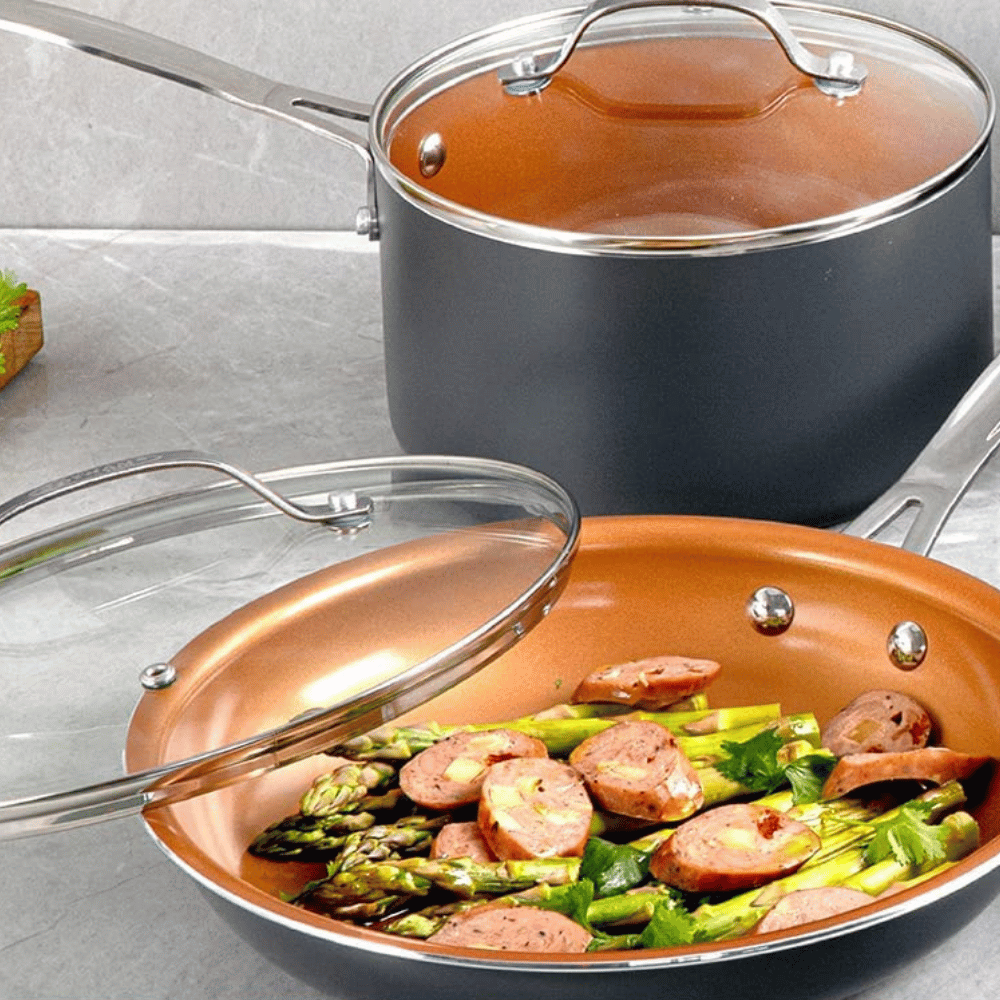
Gotham Steel Pots and Pans Set 12 Piece Cookware Set with Ultra Nonstick Ceramic Coating by Chef Daniel Green, 100% PFOA Free, Stay Cool Handles, Metal Utensil & Dishwasher Safe - 2023 Edition
Why We Love It
Welcome to Gotham, folks! No, not the city with the questionable nightlife and bat-obsessed vigilante. We're talking Gotham Steel Pots and Pans, the game-changing, un-scratchable cookware set for your kitchen. It's like they took a dip in the Lazarus Pit and came out brand-new and indestructible - every. single. time.
The nonstick cooking surface on these bad boys isn't just coated once, oh no. It's coated 3 times! Reinforced with ceramic and titanium, it promises the ultimate food release. Forget oil or butter, that’s so last decade! With this set, your fried eggs will slip-slide around like they're doing the cha-cha-cha.
With 12 pieces in the set, it's like having your own culinary Batcave, equipped for any cooking adventure. Need to steam some veggies? The 5-quart pot has got your back. Want to simmer some sauce? Say hello to the 1.5-quart sauce pan. And let's not forget about the bonus shallow square frying pan, perfect for Gotham City-style paellas.
And for the Bruce Waynes out there who would rather fight crime than clean up the kitchen, good news: these pots and pans are dishwasher safe!
Pros:
- Nonstick Ceramic Copper Coating: Slicker than Penguin's umbrella.
- Durable, Scratch-Resistant Exterior: Because even your cookware deserves a Batsuit.
- Dishwasher Safe: For those moments when you'd rather fight the Joker than wash up.
- Stay Cool Handles: Because you don’t want your handle to be hotter than Two-Face’s bad side.
Cons:
- Not actually manufactured in Gotham City: Sorry, Batman fans.
- Diamonds not included: Even though the description sounds quite diamond-ish, it's not literal.
- Might lead to you naming your dishes after Batman characters: “Tonight, we're having Alfred's Famous Bolognese!”
Safety Precautions for Using Cookware on Gas Stoves
Alright, folks, put on your safety goggles and aprons because we're stepping into the lab of kitchen safety. Cooking on a gas stove isn't just about choosing the right pots and pans; it's also about handling them with care. You wouldn't juggle knives, right? Well, unless you're a trained chef or a circus performer.
First things first, when it comes to handling your cookware, remember the three P's - Patience, Pot holders, and Proper ventilation. Gas stoves heat up quickly and stay hot for a while. A little patience can save your fingers from a fiery surprise. Pot holders are your best friends when dealing with hot cookware. And proper ventilation - well, let's just say your smoke alarm shouldn't double as a kitchen timer.
Now, on to cleaning and maintenance. Our A-list cookware materials may have different personalities, but they all like a good spa treatment. Gentle soaps, soft sponges, and a good towel dry can keep them looking shiny and new. Just remember, Cast Iron likes a good oil rub after his bath – he's a little high maintenance like that.
With safety in check, let's shimmy over to how your choice of cookware impacts your cooking techniques. It's like a dance, you see. The material of your cookware leads the waltz and your food follows suit.
Impact of Cookware Choice on Cooking Techniques
Choose Stainless Steel for its versatility, making it a smooth dancer for a variety of styles, from sautéing to simmering. Cast Iron, with its high-heat endurance, is a maestro at searing and frying - think of it as the Tango of the cookware world. And Copper, with its quick-footed heating and cooling, excels at delicate tasks like melting and tempering - it's like the ballet dancer of the kitchen.
Whether you're a kitchen newbie or a culinary virtuoso, choosing the right cookware for your gas stove can elevate your meals from 'yum' to 'give me some more!' So, don your chef's hat and get cooking!
FAQs for Cooking on a Gas Stove
We've noticed you all have been peppering us with quite a few questions about the best cookware for gas stoves. And we're here to satisfy your hunger for answers! So, don your chef hats and grab your whisks because we're about to dive into the culinary quagmire of all your burning (or cooking) queries. From material matters to heat conduction conundrums, we've got you covered!
Why do I need special cookware for my gas stove?
Gas stoves provide a different kind of heat compared to electric stoves or induction cookers. They can heat up and cool down much faster, and they offer more control over the heat level. Therefore, cookware that can respond quickly to temperature changes, distribute heat evenly, and withstand high heat is ideal for gas stoves.
Are there any materials that I should avoid for a gas range?
While it mostly boils down to personal preference, glass and ceramic pots or pans can be risky on gas stoves. They are slow to heat, may not distribute heat evenly, and are prone to cracking or shattering due to the high and direct flame of a gas stove.
What should I look for in pots and pans for gas stoves?
Choose cookware that offers excellent heat conduction properties. Materials like cast iron, stainless steel, and copper are great. Thick bottoms are a bonus as they prevent hot spots and allow even heat distribution. Also, consider durable, heat-resistant handles since gas flames can sometimes reach them.
What's the deal with heat conduction and why does it matter?
Heat conduction is all about how quickly and evenly a pot or pan can spread heat from the stove to the food. Better heat conduction means more uniform cooking and less chance of burning or undercooking your food.
How do different cookware materials affect my cooking techniques?
The material can indeed affect your cooking. For example, cast iron retains heat well and provides excellent heat distribution, making it perfect for slow-cooking methods like simmering or braising. On the other hand, stainless steel heats quickly and cools down fast too, which is excellent for sautéing or quick searing.
Are there safety precautions to using cookware on gas stoves?
Absolutely! Ensure handles are heat resistant and secure, as they could be exposed to flames. Do not leave an empty pan on a lit burner, and use lids to control flames and reduce heat if needed. Always keep a close eye on the stove while cooking.
Why is non-stick cookware popular?
Non-stick pans allow you to use less oil for cooking, which can be healthier. They also make cleanup a breeze, as food tends not to stick to the surface.
Can I use my induction cookware on a gas stove?
Yes, you can. Induction cookware is designed to withstand high heat and should perform just fine on gas stoves. However, they may not offer the best heat conduction compared to cookware specifically designed for gas stoves.
Do I need to consider the size of my burners?
Yes! Matching your cookware's size to your burners helps distribute heat evenly. If your pan is too large, it may not heat up properly. If it's too small, you risk exposing the handles to heat.
Why does the thickness of my pots and pans matter?
The thickness of your cookware plays a vital role in heat distribution. Thinner pots and pans might heat up quickly, but they may also create hot spots, which can lead to uneven cooking. On the other hand, thicker cookware tends to heat up more slowly but retains heat well and distributes it evenly, making it ideal for dishes that need consistent heat.
How can I best maintain my cookware to last longer?
Proper maintenance of your cookware depends on its material. For example, cast iron cookware needs to be seasoned regularly to maintain its nonstick properties. Stainless steel, on the other hand, can be cleaned with a mild abrasive to remove stubborn food residues. In general, avoid extreme temperature changes to prevent warping, always clean your cookware after use, and store it properly to ensure longevity. For nonstick cookware, try to avoid metal utensils that can scratch the surface. Always refer to the manufacturer's care instructions to keep your pots and pans in top shape.
Conclusion
And there you have it, fellow gastronomes! We've sautéed, simmered, and seared our way through the world of gas stove cookware, hand-selecting some prime candidates for your culinary arsenal. Whether you're whipping up a romantic dinner for two or hosting the neighborhood potluck, choosing the right cookware can mean the difference between "mmm" and "meh."
Now, if you're after that "non-stick slickness," the T-fal Ultimate Hard Anodized Cookware Set might just be your new best friend in the kitchen. Meanwhile, the Ninja C39900 Foodi NeverStick Premium Cookware Set is your 'Ninja' in the culinary world, taking on all types of heat and still remaining cool (like a cucumber).
But let's not forget our colorful character, the Rachael Ray Cucina Nonstick Cookware Set. If you're someone who likes to mix a dash of style with your simmer, this pumpkin orange set is ready to be the heart and 'soul food' of your kitchen.
For the environmentally conscious cooks, GreenLife Soft Grip Diamond Healthy Ceramic Nonstick Set provides both a great cooking experience and peace of mind. Their recycled aluminum body and toxin-free coating are as kind to your food as they are to the planet.
Last, but certainly not least, the Gotham Steel Pots and Pans Set brings a superhero touch to your cooking endeavors. Its ultra non-stick ceramic coating could probably make even a novice feel like a Michelin-star chef!
In conclusion, whether you're cooking up a storm or simply making eggs on toast, remember the wise words of Julia Child: "The only real stumbling block is fear of failure. In cooking, you've got to have a what-the-hell attitude." So grab that perfect cookware set, turn on your gas stove, and cook with reckless abandon. Bon appétit!


